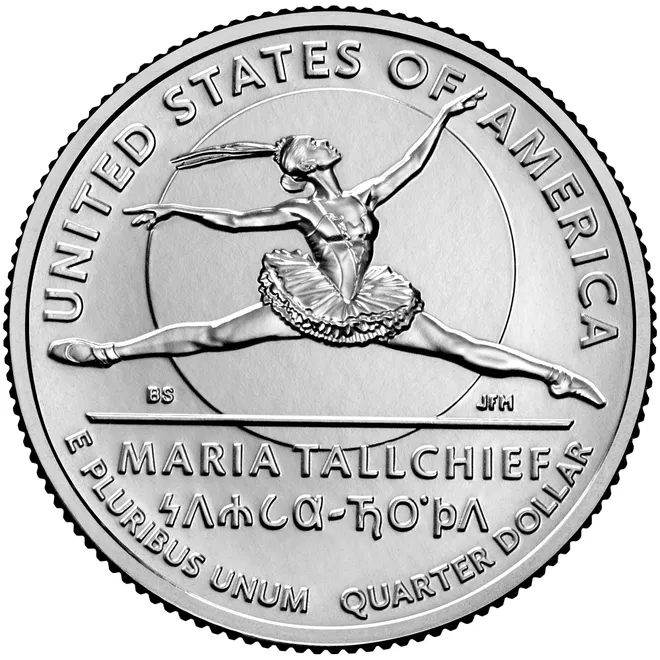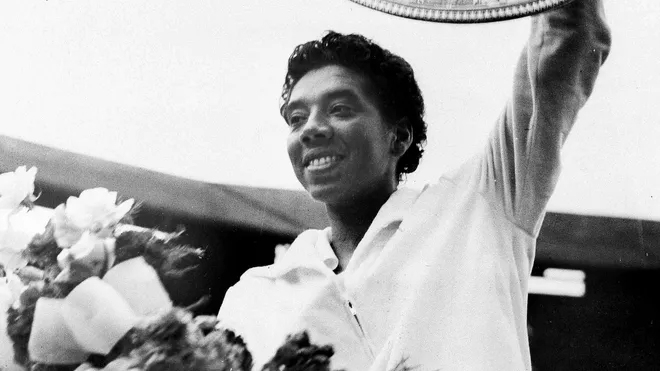US Mint announces five women completing fourth round of Quarters Program in 2025

New quarters in 2025 will honor five American women known for trailblazing across different industries from science, sports and and journalism.
The U.S. Mint announced the next wave of icons this month to be featured on the tail’s side of the quarters completing the American Women Quarters Program. The four-year program has previously recognized names like Bessie Coleman, Eleanor Roosevelt and Sally Ride on national currency since 2022.
The 2025 quarters will feature designs of Ida B. Wells, Juliette Gordon Low, Dr. Vera Rubin, Stacey Park Milbern and Althea Gibson.
The Department of the Treasury bureau program launched in 2022 following legislation introduced by California Democrat Rep. Barbara Lee.
More:UAW reaches a deal with Ford, a breakthrough toward ending the strikes against the Detroit carmakers
The program is meant to celebrate the accomplishments and contributions of American women on U.S. currency, which has mainly cemented the legacies of male figures. Mint Director Ventris C. Gibson expressed pride in how the program successfully recognized pioneering women from U.S. history who “made significant contributions and championed change in their own unique way.”
“I am pleased to announce the final five of the 20 remarkable women we have featured in the American Women Quarters Program,” Gibson said in a news release. “It’s a privilege for the Mint to connect America through coins, and to tell our nation’s story through honoring the women in this amazing program.”
According to the bureau, the Secretary of the Treasury (currently Janet Yellen) decides which women are featured after consulting with the Smithsonian American Women’s History Museum, the National Women’s History Museum, and the Congressional Bipartisan Women’s Caucus. The coins are manufactured at Mint facilities in Philadelphia and Denver.
The designs for the quarters featuring the 2025 honorees will be unveiled in 2024.
Here's what to know about the following U.S. figures.
Investigative reporter Ida B. Wells
Wells is known as a pioneering investigative journalist and civil rights activist. In 1909, the Memphis suffragist co-founded the National Association for the Advancement of Colored People (NAACP).
“Wells used her powerful voice to speak out against and investigate lynching and other social injustices against Black people,” Mint wrote. “She traveled across the nation and internationally, shedding light on state-sanctioned violence, despite dangers she faced.”
Born into slavery, Wells would go on to report on the lynchings of three store owners exposing the economic undercurrents behind the murders. She also actively engaged in the women’s club and suffrage movements and played a major role in Chicago social work.
'Invest in women':Female athletes changing landscape on ownership in professional sports
Girl Scouts founder Juliette Gordon Low
Low founded the Girl Scouts of the USA on March 12, 1912, in Savannah, Georgia. The organization is now known for developing leadership and advocacy skills for all girls regardless of differences. The international organization now has nearly two million adult and girl members globally.
Throughout her life she took on a mentor role teaching young women how their government worked before they could even fully take part in it.
“Low personally embodied many of the traits that are found throughout Girl Scouting,” Mint wrote. “She founded a movement that prepared girls for leadership eight years before women gained the right to vote in the U.S. and emphasized civic responsibility, motivating girls to make their communities better places through service.”
Astronomer Dr. Vera Rubin
Rubin is known as a trailblazing astronomer who transformed everyone’s understanding of the universe through her pioneered work on galaxy rotation and helping provide the first persuasive evidence of dark matter.
She is recognized for both her help confirming that the vast majority of the mass in the universe is invisible and for pushing for more women on scientific committees.
“Early in her career, Rubin struggled to gain recognition as a female astronomer in a male-dominated field, and throughout her career she fought to bring down barriers to research that women face due to sexism,” Mint said. “In addition to her research, Rubin mentored other women astronomers and fought for gender parity in science.”
Activist Stacey Park Milbern
Born with congenital muscular dystrophy, Milbern became an activist for people with disabilities with more than a few national achievements.
She was appointed to the North Carolina Independent Living Council and Commission for the Blind by the governor and to the President's Committee for People with Intellectual Disabilities by Barack Obama. She co-founded the disability justice framework with focus on marginalized communities and raised awareness on the challenges access to lifesaving care faced.
“Her visionary speeches and online writings inspired empowerment, inclusiveness, and interdependence. She directly supported people with disabilities transitioning from institutional care to living independently,” Mint said.
Tennis star Althea Gibson
Gibson earned many firsts across multiple sports. The athlete was the first black athlete to break the color barrier at the highest level of tennis winning 11 Grand Slam titles and was the first Black player in the Women’s Professional Golf Tour. In 1958, the Associated Press named her the Female Athlete of the Year.
Her legacy is already cemented at the International Tennis Hall of Fame and the International Women’s Sports Hall of Fame.

Disclaimer: The copyright of this article belongs to the original author. Reposting this article is solely for the purpose of information dissemination and does not constitute any investment advice. If there is any infringement, please contact us immediately. We will make corrections or deletions as necessary. Thank you.





